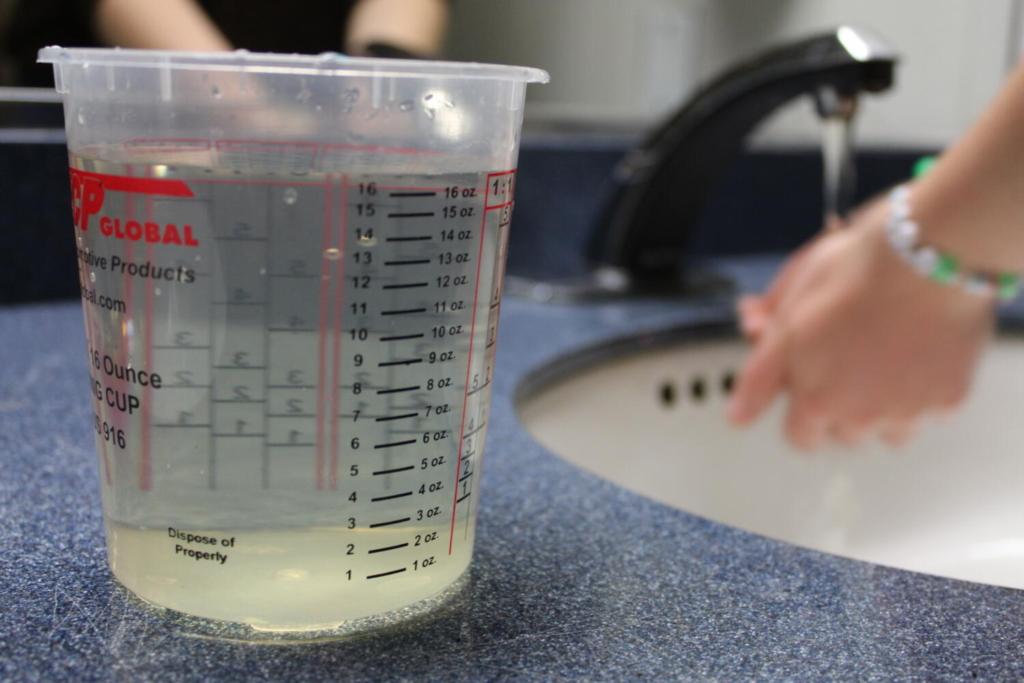Can I drink the H2O?: Exploring East Palo Alto’s water crisis
Yellow water runs out of bathroom and kitchen faucets in households and public facilities in certain neighborhoods of East Palo Alto. This is the reality that some East Palo Altans have been facing for years, according to the Silicon Valley Community Foundation. To combat this issue, 74% of East Palo Alto residents have taken action by buying bottled water for drinking and cooking purposes, according to a survey released by East Palo Alto nonprofit Nuestra Casa which surveyed 715 residents.
Verde went door-to-door in East Palo Alto and found a number of residents who have experienced the water issues highlighted by the Nuestra Casa survey. Palo Alto High School freshman and East Palo Alto resident Jose Pinto has experienced issues with his water over the past two years, although less so since his family moved.
“From time to time, there’d be some really dirty water [where Pinto used to live],” Pinto said. “You couldn’t even wash your hands with it. You could literally see the color’s nasty.”
His family took steps to address the problem.
“We used to use a filter for our sink,” Pinto said. “In some areas in East Palo Alto there is still really bad [water].”
According to the Palo Alto Daily Post, East Palo Alto residents get water from the city or two privately-owned companies: Palo Alto Park Mutual Water Company and the O’Connor Tract Cooperative.
“From time to time, there’d be some really dirty water. You couldn’t even wash your hands with it.”
— Jose Pinto, freshman
The two companies get their water from wells, while the city receives its water from the Hetch Hetchy system like various Bay Area cities including Palo Alto.
“The city water is Hetch Hetchy, so aside from old infrastructure, it should be fine,” Palo Alto Daily Post reporter Emily Mibach said in an interview with Verde.
Mibach, who has been reporting on San Mateo County for five or six years, heard about the issue in a Nuestra Casa press release found that many residents she interviewed do not feel safe drinking the water.
“I’d kind of heard sometimes residents in EPA turn their tap on and it’s brown,” Mibach said. “But sometimes that happens when water companies flush the water lines and people aren’t notified so they don’t know that it’s a temporary thing.”
Mibach said that she thinks it’s more difficult to address a problem when a company is privately owned.
“If the city does something bad, residents can show up and yell at City Council about it,” Mibach said. “It’s a little harder to do when it’s a private company.”
The East Palo Alto City Council met on Oct. 4 to work to address the water quality and take action related to the 2022 Water System Master Plan.
“The water controlled by EPA is old pipes,” Mibach said. “The city has been working on a plan to replace some of those old pipes.”
“If the city does something bad, residents can show up and yell at City Council about it. It’s a little harder to do when it’s a private company.”
— Emily Mibach, Palo Alto Daily Post reporter
City Councilman Carlos Romero, lives in the Palo Alto Mutual water company’s distribution area and spoke about how bad his water is, according to the same city council meeting. He mentioned that sometimes his water is brown. Even as a member of the city government, he does not know why he’s experiencing this issue. Romero was not available to comment on the issue.
“I think it [problems with water] adds to some of the stigma about EPA being less than [Palo Alto], but it also points out the years and years of neglect that the city has received from San Mateo County, from its neighbors,” Mibach said.
As part of the Oct. 4 meeting, the city approved plans to replace old iron pipes that the city’s water runs through, including replacements on University Avenue and Weeks Street. Although this is a major step in helping address the issue, the problem goes beyond old pipes and is rooted in the longstanding disparities that exist between East Palo Alto and Palo Alto.
Pinto reflects on his experiences with his water.
“And having to waste our money [on plumbing services] just to get something … that should have been clean a while ago,” Pinto said. “So it’s a waste of money to get a resource we need.”
DANGEROUS DRINKING — The East Palo Alto Library cautions visitors from drinking the water that runs from their faucets as they check the piping for possible issues. “I went to the library, their water's super dirty,” East Palo Alto resident Jose Pinto said.





